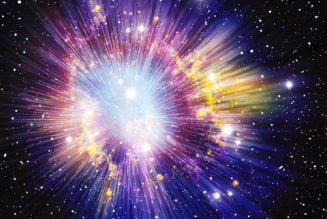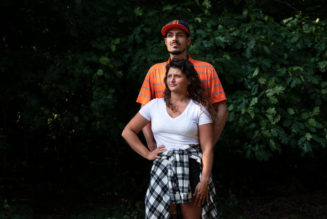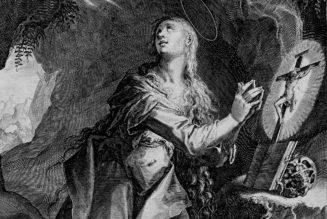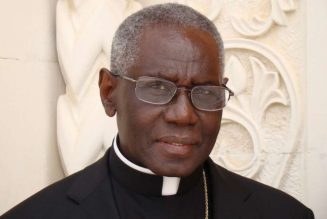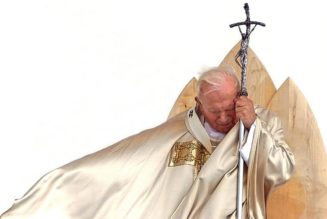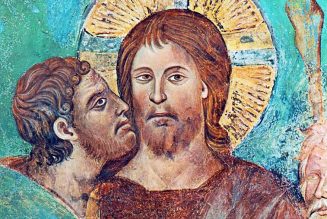One late spring evening in 2018, Justo Gallego Martínez said he would show me his grave. The old man was warming his hands by a stove in the dim back room of his cathedral. A dusty film coated the concrete floor. The shelves and tables were full of relics, screws, chipped wood, crushed glass, half-eaten loaves of bread. A bare hanging bulb cast the room in jaundiced light.
“I want to be buried here,” Justo said, signalling around him to the cathedral’s cavernous nave and the 20 trembling towers sprawled across thousands of square feet of his own land on the outskirts of Madrid.
The cathedral’s crypt would be his burial place. And he’d be buried there because it was his cathedral. He’d designed it entirely in his head, without a single measurement or calculation on paper, without a record of any of the materials he’d used. And he had done it largely by himself.
I sat near Justo in the gloom and watched as the fire nearby threw shadows across his sunken eyes and recessed temples. He was nearly a century old, a jumble of protruding bones, but energy still pulsed through him.
“Come on, let me show you,” he grumbled.
Get the Guardian’s award-winning long reads sent direct to you every Saturday morning
Grabbing my arm, Justo winched himself up from his seat and led me out the door to the ambulatory. His baggy blue coat hung from his frame like wet clothes on a washing line.
Outside, the uncovered frame of a dome, 35 metres high and 10 metres wide, loomed above us. The nave lurched around 45 metres to our left, covered by a half-barrel vault whose exposed beams curved upwards like a whale’s ribcage.
The rest of the cathedral was an architectural Frankenstein’s monster propped up on mismatched bricks, tires, wheels, food cans, plastic and excessive quantities of concrete. Large chunks of the building were already in decay, invaded by moss and rising damp. In the aisles dusty cement bags were piled as high as the first-floor gallery. Other rooms erupted with broken tiles, dismantled cement mixers, motorbikes, rotten wood, oxidised saws, festering ropes, chicken carcasses and plastic bags fossilised in pigeon shit. It sprawled over an area the size of a football pitch.
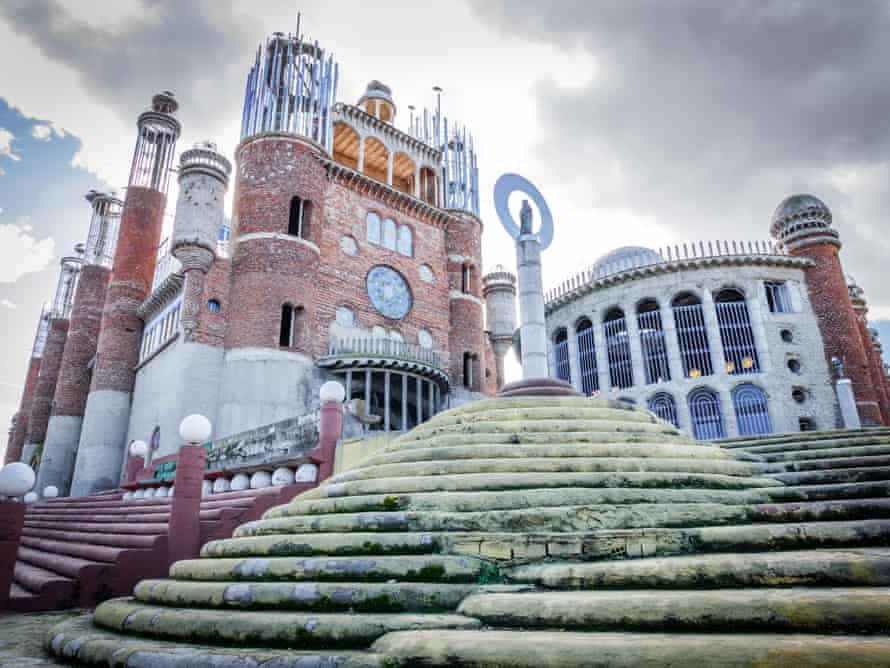
Justo didn’t look up or down. He shuffled over the slippery marble tiles to the altar at the back of the apse, passing by a lifesize crucifix cast in white plaster.
“Down there,” he pointed, his voice shrill.
Next to the shrine, the floor opened to the darkness of the crypt below. This hole was where it had all begun, Justo said. Here, he had first started to dig, and to formulate his vision. Here, too, at the back of the crypt, in the half-light of the lower courtyard, is where it would end.
I had lived in Spain for almost six years before I heard about Justo. In early 2018, I came across an article in a local paper about an ex-monk building a cathedral in Mejorada del Campo, just outside Madrid. For almost 60 years, with no help or architectural expertise, Justo Gallego Martínez had been constructing a cathedral that was almost the size of the Sagrada Familia, using waste and recycled materials.
When the monk started his project, the locals had called him a madman. Since then he had fought with family members, made enemies and won an adoring international public. He had never gained formal permission to build the structure, which meant it was illegal. The Official College of Architects of Madrid had confirmed that “not even the preliminary papers [for registration] have been submitted”.

Representatives from the Catholic church would later tell me that it is too expensive and complicated a project to take on. And the provincial government maintained that it didn’t have the money to renovate it to standard. There was concern among the locals that the cathedral might be torn down.
Several months after reading about Justo for the first time, I found myself standing next to this bewildering man, as he stood next to his own grave, insouciant about his own death.
Over the years that followed, as I got to know Justo better, I realised that he was a mess of incongruities. He could be open-minded and bigoted, forgiving and stubborn, kind and brusque, wise and simple. He was a flawed genius, who never sought to be named as such, a man who didn’t want to be discovered, but had done everything to make himself discoverable.
Justo’s early life was marked by religious fervour, political upheavals and health problems. As a boy, he was very close to his mother. “She was the one that taught me the words of the Bible,” he said. At an early age, he had to leave school to escape the dangers of the Spanish civil war, which ravaged Madrid and its surroundings. His mother’s teachings were a vital part of the little education that Justo would receive.
The young man had always dreamed of dedicating his life to God. When he travelled to Madrid to run errands, he would roam the capital’s streets searching for a woman more beautiful than the Virgin Mary. “But I couldn’t find her,” he laughed. So, the boy chose to consecrate his life to the Virgin and remain a virgin himself – a man of God, not tempted by carnal desires. “I want to be pure, not a slave to my body.”
At the age of 27, he entered the monastery of Santa María de Huerta in Soria, northern Spain. Many of his fellow monks found him strident and difficult; he would work longer hours than necessary and often pray into the night. Insisting on remaining teetotal, he even refused to drink the wine during communion. “They were very suspicious of me,” he once told local journalists. “They said I was breaking the rules.”
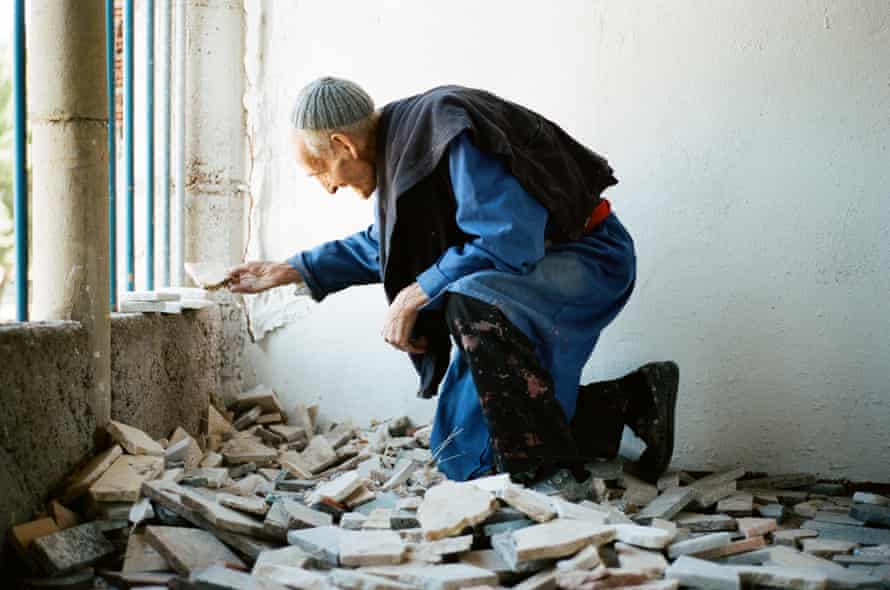
Seven years after he entered the monastery, Justo said, he contracted tuberculosis. He travelled to Madrid to recuperate in hospital. When he returned to the monastery, his brother monks did not allow him back in. I once asked Justo whether he thought this had to do with his extremism or his illness, but he was reticent on the details.
Justo told me that after he was rejected from the monastery, he went to Mejorada del Campo and fell into a “funk”, what we might consider depression. He no longer knew how to dedicate his life to God. He began to live like a hermit. He spoke to no one, not even his friends; he thought only of God and the Virgin Mary. Where would he channel his religious fervour? What could he do with himself that would mean anything? It was in the midst of this self-questioning, he said, that it came to him – the idea to build something for his creator: a cathedral, which would demonstrate his willingness to sacrifice himself for God.
So, in 1961, he started to dig.
Justo worked feverishly. Alone, he barrelled mountains of dirt, scaled scaffolding with no harness and soldered with no mask. Sometimes he would have visions. Laying bricks, he would suddenly remember the holy trinity, drop to his knees and weep. “He definitely had many intense, visual experiences with God,” Francisco Martinez, a local priest, told me.
Justo came from a relatively well-off family who owned land near Madrid. Over the years, he sold much of it to fund the construction of his church. He also relied heavily on charity. A factory in a nearby village supplied concrete, while another offered broken tiles and discarded bricks.
Justo hated sharp angles and straight lines and tried to avoid them at all costs. He preferred curves and circles – vaulted ceilings, domes, arches, rounded chapels, annular altars and spiral staircases. “God made all things round. He made the planets round. He made the earth round.”
To make circles he would bend metal rods around columns and draw around circular water drums or tins of paint. But making curves was more difficult. They were expensive and had little tolerance for error. A millimetre of imprecision in one step could culminate in a spiral staircase that didn’t quite reach its landing.
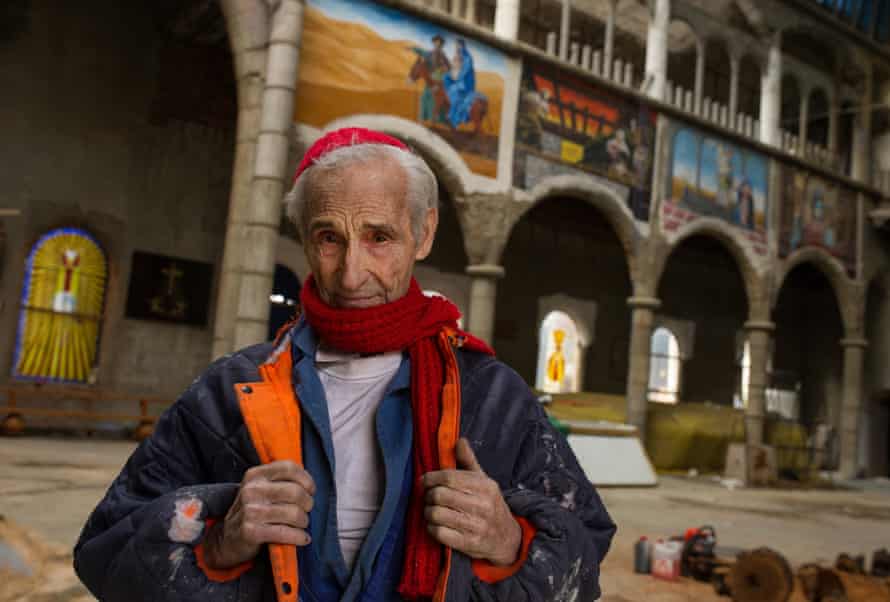
The curve Justo loved most was the dome, which was modelled on St Peter’s basilica in Rome. With large blue metal girders curving up to a pressure ring at its centre, it looked like a mechanical spider atop the nave. The dome took him 30 years to imagine and seven years to build. It is the only thing I ever heard him boast about. “You won’t find anything like this in Madrid,” he’d say. There were never any plans or drawings. Though he received help from ironworkers, Justo implied that he did the work alone.
When I asked how that was possible, he replied with barely comprehensible stories about spindly scaffolding 250 metres high, no harnesses, groaning metal bars and gusty winds. When I pressed him further, when I asked him how he had actually built it, Justo merely said he had managed it through a combination of determination and prayer.
Justo made up for his technical shortcomings by devising strange solutions. He piled empty paint cans on top of one another and filled them with concrete to make columns. He bent corrugated iron rods and fed them through slinky-like springs to create the structure for arches. When the columns he built were too short, he filled the gaps with clumps of iron, piling them up like mismatched books to the height of the support beams. He’d then solder them together.
Justo was often compared to Gaudí, the architect of the Sagrada Familia. This displeased him. He saw Gaudí’s work as garbage. “His stuff is completely over the top!” Justo told me. “There are too many spires, too much of everything.”
In the 60s and 70s, Spain was ruled by a dictatorship that exalted deeply conservative Catholic values. This would have suited Justo, except that the dictatorship also brought with it an atmosphere of paranoia and suspicion. Over the decades, as he continued to build, most of the villagers declared him an outcast. A madman. “He was the type of person dressed in a winter coat in the summer and summer clothing in the winter,” recalled one local resident.
Justo was the kind of man who didn’t fit in. “It’s easy to overcome people’s judgment,” he once told Spanish television. “They call me crazy. So what! I’ll get over it.”
But Justo wasn’t crazy. He was just unwilling to submit to what most people considered normal. He didn’t need love or approbation because he had purpose. That was enough. When he first started his project, he was helped by his nephews, but they fell out over money and Justo found himself in debt. In the early 80s, when the bailiffs came knocking, Justo said he had to move into the cathedral full-time.
Then, in the early 90s, a man named Ángel López appeared, and started to visit regularly. After living and working alongside the old man, Lopez – a squat, beefy labourer from Guadalajara – he had an epiphany, he told me, and renounced his former life to move into the cathedral with Justo. He sold his apartment and paid a large chunk of Justo’s debt.
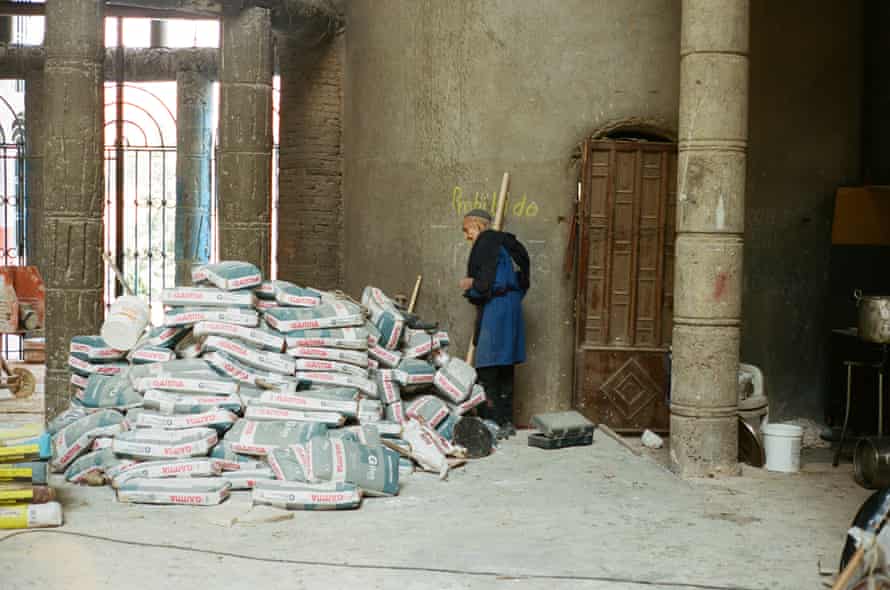
During the three years I spent visiting Justo’s cathedral, I found Ángel hard to place. Sometimes he would speak to me as if I was his accomplice, whispering to me in conspiratorial tones; at other times, he treated me as an incompetent foreigner who barely understood Spanish. Often, he seemed to be doing his own thing. He would be out hunting rabbits or at the bank. He was always going somewhere, always unavailable. He was not filled with Justo’s religious fervour, nor did he have his charisma. Though he always spoke fondly of Justo, calling him his “master” and a “genius”, he could also be unenthusiastic about the cathedral’s future. “When Justo’s gone, there is no plan,” he said when I asked him about it.
Why had Justo rejected the help of so many other people for so long, but ended up with Ángel? When they were together, the two men bickered like seagulls, squawking and squabbling their way into getting nothing done. “You’re getting worse,” Ángel would say. “You don’t listen,” Justo would retort. In some ways, Ángel reflected Justo’s insecurity. Perhaps Justo feared that if he had taken on a more able helper, he would have lost control of his project. Perhaps Ángel’s ordinariness allowed Justo to stay in control longer.
But I also had to check my cynicism with reality. While I was there, I saw that Ángel always made Justo’s lunch and dinner. In the mornings, he got him out of bed and dressed him. He would take him to the doctors and to mass every Sunday.
Throughout the late 90s and early 2000s, Justo’s feverish devotion emerged as something more than just eccentricity. The cathedral was becoming more significant than any of the locals could have imagined, and Justo passed from madman to genius.
Soon there was interest from local newspapers. Then the national press came, followed by journalists from abroad. At the end of 2003, photographs of Justo’s cathedral appeared in an exhibition at the Museum of Modern Art in New York. However, Justo declined the invitation to travel to the US because, as he said at the time, “I have too much work to do.”
The cathedral became even more famous in 2005 when it appeared in an advertisement for a new soft drink made by the Coca-Cola Company. Justo only agreed to the advert to get funds to continue building. He wasn’t thinking about cash, only more bricks. Indeed, when the commercial was shot, Justo had no idea of the consequences of his decision: “I didn’t know it was going to be on TV. I thought they were just going to print something on the side of the can.”
There was an irony to the advert’s success. While Justo had tried to embody temperance and humility, one of the world’s biggest brands had turned his abnegation of the ego into the exact opposite – a celebration of individual accomplishment. The ad had made his faith synonymous with ambition, his devotion with perseverance, and his sacrifice with self-interest.
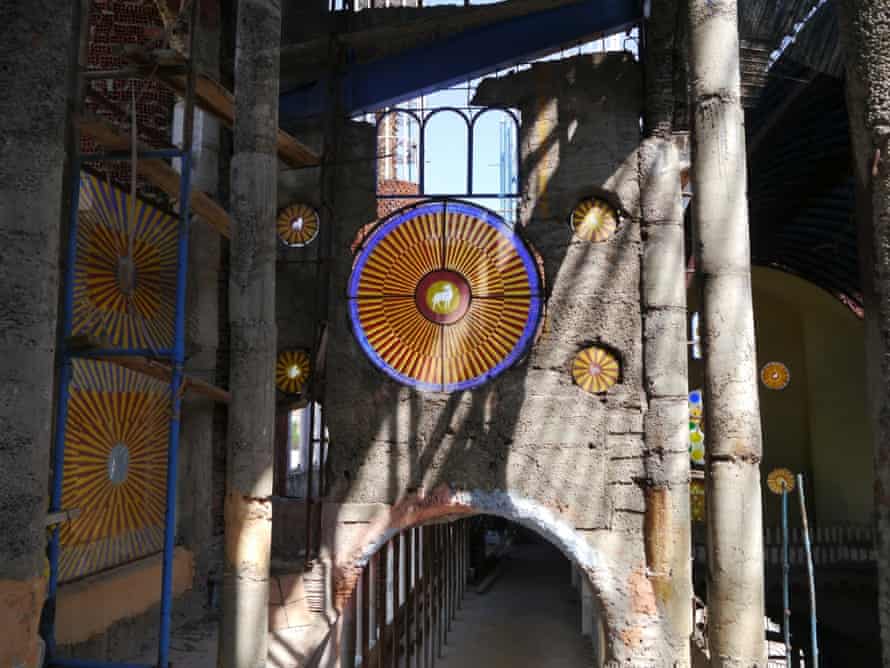
Over the years, tens of thousands of people have come to visit the cathedral. They all want to see Justo – to touch him, to hear him speak, to understand him, his inspiration, his genius and his imagination. I saw old ladies kiss him, pilgrims accost him and fanatics pitch him with all manner of schemes for the future of the cathedral.
People often talked about him in saintly terms. They marvelled that, during almost 60 years of construction, he had suffered no significant injury. Carlos Luis Martin, an architect who helped Justo at the cathedral, recalled witnessing an accident: “I was working in the crypt. Justo tripped over a stone and fell and smashed his head on the ground hard … But [he] just got up. ‘God has healed me, and now all is fine,’ he said. And there was not a scratch on him.”
Justo often found all the attention difficult. He would get angry and clash with visitors. He would call them “scoundrels” and make them delete their photos. He would berate women who came in wearing short skirts. He put up signs saying he was not to be spoken to. Carlos Silvera, a Madrid-based artist who painted the cathedral’s murals, remembered when a young woman visited the cathedral and told Justo how impressed she was with him. “She said she had studied art. She told him how she had travelled. She told him how she understood religion. But as she was talking, Justo interrupted her: ‘You use the word I a lot, don’t you?’ The young woman went quiet and began to blush. ‘You know that your biggest enemy is I.’”
Justo could be tactless and unsympathetic. He could not see, or perhaps refused to see, what his building meant to others. He wanted to keep its significance tied to God, and failed to understand how it moved and inspired those who came to see it. As the cathedral’s wobbly towers began to rise above the drab uniformity of Mejorada del Campo, capturing the world’s attention, Justo wasn’t able to figure out why he could no longer control his story. He became resentful. When one of the Coca-Cola executives who had commissioned the ad returned to the cathedral in 2019 to visit Justo – having not seen him since the shoot in 2005 – he found a man and an attitude he was not expecting. Justo told him that the advertisement had only brought him problems. “He told me he wished it hadn’t happened.”
By the end of 2019, Justo’s health began to deteriorate, and his undiagnosed dementia progressed more quickly. He laughed less and made less sense when he talked. He also seemed increasingly frustrated. Ill and weak, he was frequently in and out of hospital. He spent most of his time sitting in an old office chair in his gloomy personal quarters. A puddle of bloated lentils and a hollowed-out baguette often sat at his side. He was always cold. He stuffed scraps of cardboard, kindling or anything that would burn into his rickety wood-burning stove. He would wander around aimlessly, taking things from here to there, picking up a piece of wood and inspecting it, dragging a pile of stones to nowhere in particular. He might then sit in another chair on the balcony that led to the cloisters, where he squinted at the sun, rosary beads twitching in his hands, muttering and murmuring to God.
Despite his deterioration, Justo still had an infectious, boyish enthusiasm that transcended generations and our respective beliefs. In fact, during those visits in 2019, I felt our relationship evolved beyond its initial awkwardness. That summer, as we sat in the ambulatory together, he asked me about my family’s faith.
“Are your parents Christians?”
“Yes,” I told him. It was a half-truth; they were baptised agnostics like me.
“But have you studied the catechisms?” he asked again.
“No.”
“Well, I want you to have this,” he said, brandishing a book of catechisms. “It’s my gift to you.”
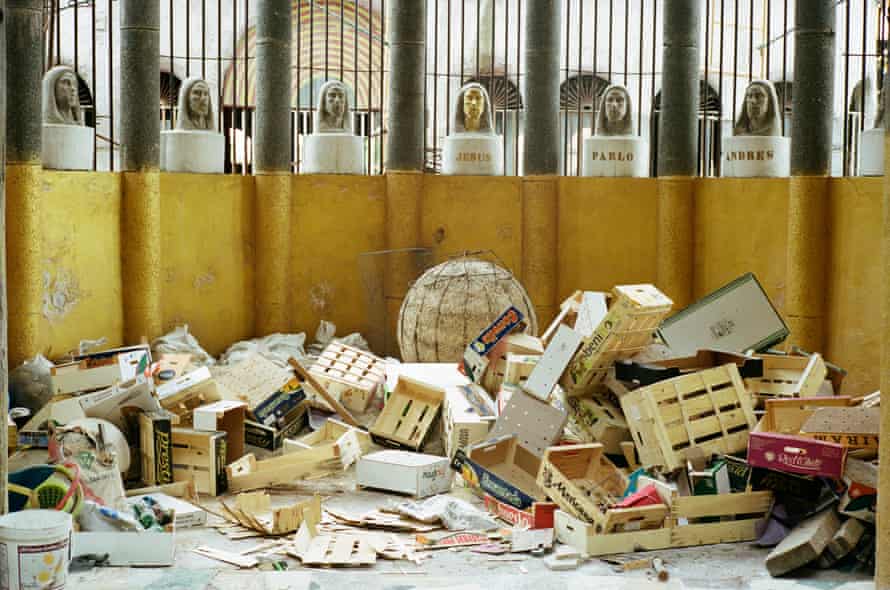
Another time, I remember being in Justo’s dingy backroom, stoking his wood-burning stove.
“You have to read The Imitation of Christ by Thomas à Kempis,” Justo told me excitedly. “It’s incredible!” (The book, one of the most important devotional Christian texts ever published, preaches that a good Christian should live an interior life by renouncing all that is vain and illusory. It was Justo’s second Bible.) He retrieved a battered copy from a nearby shelf littered with nuts, screws and sandpaper, and handed it to me. “Read it aloud,” he ordered.
Without overthinking, I began to read: “How undisturbed a conscience we would have if we never went searching after ephemeral joys nor concern ourselves with affairs of the world.” Justo stood back, a contented smile on his thin lips, his eyes closed as if in prayer. The book seemed to be giving him sustenance and greater joy than, as Kempis writes, a “multi-course banquet”.
Still, those moments were rare. Mostly, Justo just seemed lost in his cathedral and in his ailing head, which, he grumbled, “no longer worked”.
At the beginning of 2020, the cathedral was in a precarious situation. Justo was weak and rarely left his room. The prospect of his death threatened to leave behind an administrative mess. The cathedral was illegal, after all – it didn’t exist on any register. And over the years it had swollen into a sprawling mass of iron and concrete, with its gangly cloisters and crooked towers encroaching on the surrounding buildings. No architect was willing to sign off on its structural soundness. Anyone who vouched for its stability would be liable for any damages incurred by visitors. The local government was afraid that it might fall and so would not give it administrative approval. But without this, the church couldn’t be consecrated. It was a catch-22, and neither the town hall nor the local diocese appeared willing to invest anything in solving it.
When I talked to the vicar in charge of the diocese’s architectural projects, he was cagey about Justo’s cathedral. He said he wanted to set up a foundation to raise funds to save it. But, if the cathedral was saved, he couldn’t say whether or not it would be used for religious purposes. When I asked Ángel what he would do when Justo passed away, he looked at me blankly. “I don’t want to think about the day that Justo is no longer here,” he said.
But locals and people farther afield still recognised the importance of the cathedral. YouTube is filled with young vloggers rhapsodising about it. There are regular articles in the Spanish national press providing updates on the building’s legal situation. Unesco representatives even paid a visit in early 2020. Still, attempts to legalise the structure had progressed slowly, if at all. It looked likely that Justo would not live to see his cathedral saved.
Then, in May of 2021, Justo and Ángel donated the cathedral to an organisation known as Mensajeros de la Paz, or “Messengers of Peace,” a Catholic NGO that helps the poor in more than 50 countries. Padre Ángel, the organisation’s founder, had, like Justo, been deemed a visionary, a crazy man. He had started the organisation by himself and had grown it into one of the biggest Catholic NGOs in the world.
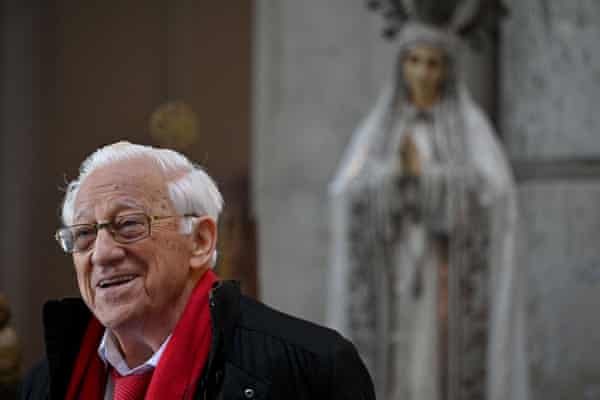
Desperate for a solution, Justo and Ángel had asked the organisation to take care of the church. Padre Ángel, who knew Justo’s story, was enticed. He decided to take on the building – no matter how much it would cost, no matter how difficult an undertaking it might be.
The organisation swiftly moved in to the cathedral, cleaning up the mess, smoothing over cracks, reinforcing arches and putting up walls. They also sent in some of Spain’s top structural engineers.
During their initial surveys, the engineers were pleasantly surprised. “With so little knowledge of construction, it’s as if he’s invented architecture in his head,” one of them marvelled to me. Though they couldn’t be sure the cathedral was completely stable, they were surprised by how carefully it had been built. It was worth saving, of that they had little doubt.
But, at times, I felt that the organisation’s involvement could be overbearing. Justo was disappearing from his own cathedral. He no longer came out of his room. He no longer shouted at volunteers. He was in his wheelchair or his bed. I sensed the cathedral’s future was out of his hands. The nave was now decked out with the Messengers’ paraphernalia: huge posters depicting the pope had been hung either side of the main altar, the Messenger’s maxims were written on the walls, and a makeshift food bank had been placed in the central nave. Justo’s name appeared in some places, but his presence felt largely posthumous.
The Messengers also announced that they wanted it to be an open religious space where Muslims, Jews, Protestants, Orthodox Christians and Catholics could congregate and discuss religion. I knew that Justo had fought for many years for his cathedral to be consecrated as a Catholic place of worship. Conscious of how antiquated and conservative Justo could be, I wondered if he’d be horrified at the Messengers’ vision.
The last time I saw Justo, he was on his deathbed, a colostomy bag hanging from his mattress, his bald head shining like a crystal orb. Ángel was by his side. I hadn’t seen him for months, and I wanted to know what he thought of the cathedral’s new guardians. Propped up by a pillow on a hospital bed in his newly decorated bedroom, Justo’s voice was higher than when I’d last seen him, his speech more accelerated, and his mind, as it always was, a swirl of thoughts and ideas. He was at times thankful, and other times angry about what had happened. More than anything, he just seemed confused.
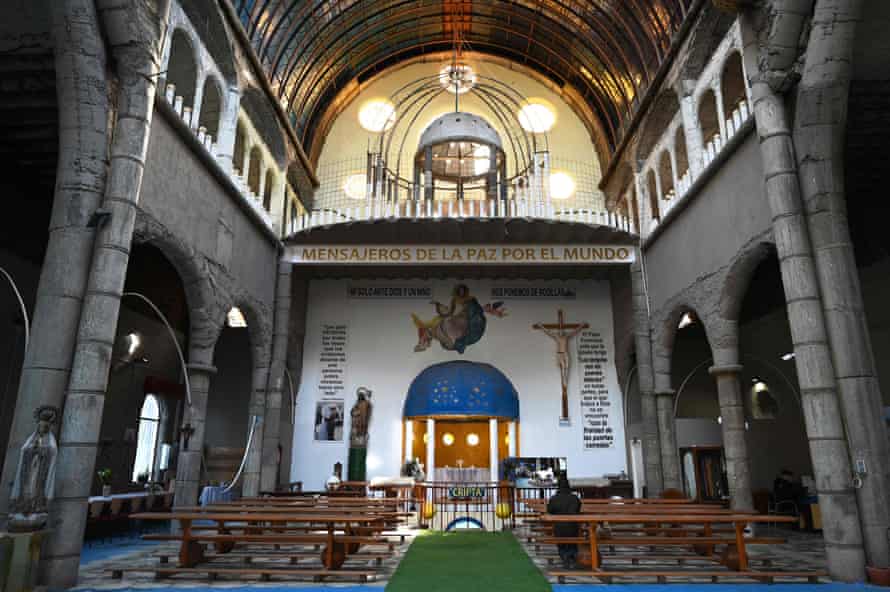
I didn’t know what to take from this interaction. In truth, I felt Justo was too far gone to answer our questions, and it was hard to know what he was saying for himself and what was being said for him. When Justo’s words became muddled, Ángel often finished or interpreted his thoughts.
Over the following days, as I witnessed meetings over the cathedral’s fate and saw how frail Justo had become, I felt sad that he had to be part of these discussions and tensions. After all, notions of posterity were in many ways anathema to him – legacy was vanity, and vanity was the devil.
I was taken back to that late spring evening at the end of my first visit to the cathedral, with Justo standing precariously close to his grave. He had seemed nonchalant, as if it were normal to pre-empt one’s death. “I’m ready for the end,” he mumbled, still staring out at the courtyard.
Justo told me he had long been content with his efforts, even though the cathedral was unfinished. He didn’t believe in perfection. How could he? Perfection was God. Unattainable. Perfection was really only the mask of ambition, and Justo wasn’t driven by ambition. His cathedral was full of half-baked ideas, trial and error and moments of brilliance. It was the inside of Justo’s head rendered in iron and concrete.
“We are only in transit here on this earth,” he said, turning his head toward me. “In the end, it doesn’t really matter what we do here. It’s up there where it counts.
“What happens to the cathedral is now no longer up to me,” he said, glancing at his grave. “I’ve done everything I need to do.”
Justo Gallego Martínez died on 28 November 2021.
A longer version of this article first appeared in the online magazine Hazlitt. A film about Justo’s life by Matthew Bremner and Denis Dobrovoda, The Cathedral, will premiere at Krakow film festival on 31 May
Join Our Telegram Group : Salvation & Prosperity
